Ireland is renowned for its beautiful waterfronts, but there are two notable regeneration opportunities that have yet to be tapped: the docklands of Cork and Galway.
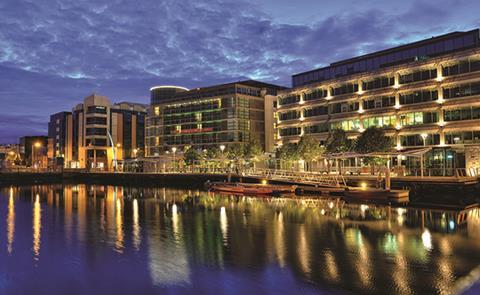
Cork’s docklands have been described as the last great undeveloped urban landbank in Ireland. They were earmarked for major residential, retail and leisure regeneration a decade ago, but plans stalled as a result of the financial crisis. Now, they are very much back on.
The area has already benefited from the €80m (£73m) redevelopment of Páirc Uí Chaoimh stadium, home to Cork’s Gaelic Athletic Association, which reopened last month, and Green REIT’s One Albert Quay, a €52m office building on the south bank of the River Lee, which secured a 100% pre-let ahead of completion last year.
Activity at the Port of Cork has gathered momentum in recent weeks. Earlier this month, the Port of Cork Company purchased the former Irish Fertilizer Industries site at Marino Point in a public-private-partnership deal with Lanber Holdings. Port of Cork chief executive Brendan Keating has said the partnership will “explore every business opportunity for the site”.

However, the next significant scheme set to be delivered is the port’s Ringaskiddy project, which it is hoped will kickstart regeneration of the wider docklands area to the tune of €1bn.
Kickstarting regeneration
Initial plans were given the go-ahead in May 2015 when the Port of Cork was granted planning permission for a €100m redevelopment of its harbour in Ringaskiddy, a nearby village with easy access to Cork Airport. The permission paves the way for the Ringaskiddy Port redevelopment project, which will allow larger vessels to dock in Cork.
Although the investment has been scaled back to €80m, it will still see the development of a major hotel - Marriott is thought to be interested - as well as port-based logistics, offices and leisure facilities.
The port is also developing a new container terminal, making major road improvements and creating amenity space, including a new public pier. The new facilities are expected to be delivered in the first quarter of 2020.
Ensuring the Port of Cork continues to meet external connectivity needs and supports the development of the economy is of key importance - John Geoghegan, Ringaskiddy Port
Plans are also under way to regenerate Tivoli docklands, which the Port of Cork is preparing to vacate. Earlier this month, a blueprint for the redevelopment of the docklands, which are part of the Ringaskiddy Port redevelopment, was unveiled, proposing the development of 4,000 housing units, shopping centres, offices and a railway station.
Ringaskiddy Port redevelopment project director John Geoghegan says he is confident the docklands redevelopment will form part of the government’s National Planning Framework (NPF), which is expected to be published in the autumn.
“Ensuring that the Port of Cork continues to meet external connectivity needs and supports the development of the wider regional and national economy is of key importance,” he says. “This is clearly enunciated in Irish government policy and we’re confident they will continue to support our growth.”
Supporting growth
Irish foreign affairs minister Simon Coveney and agriculture, food and marine minister Michael Creed have already signalled their support for the plans prior to formal inclusion in the NPF.
Creed has said they could “bring substantial benefits to the local economy” - especially if the scheme can tempt the proposed International Shipping Services Centre (ISSC) to Ireland’s second city.
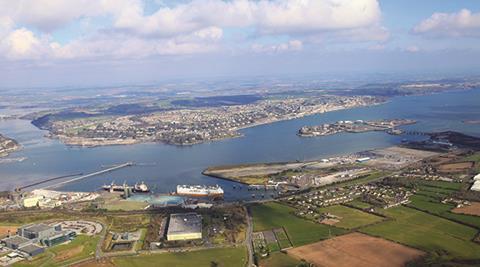
Devised by Cormac Megannety, a consultant in CBRE’s Dublin office, the proposal to create a cluster of shipping-related businesses was originally earmarked for Dublin but plans appear to have stalled. According to Port of Cork Company’s commercial manager, Michael McCarthy, this has created an opportunity for Cork to step in.
The ISSC Cork can be viewed as the most important urban regeneration initiative in Ireland - Michael McCarthy, Port of Cork Company
“The ISSC Cork can be viewed as the most important urban regeneration initiative in Ireland and an unrivalled opportunity to present the docklands as a viable IT-driven home for a wide range of shipping-orientated companies and their staff in a 21st-century environment,” he says.
There are also high hopes for other parts of the docklands, including City Quays as well as Horgan’s Quay, close to the mouth of the River Lee near the city centre.
‘Envy of any city’
Isobel O’Regan, director in the Cork office of Savills, says that thanks to the scale of ambition for the city’s docklands, Cork’s growth potential is finally on the verge of being realised.
“It’s a phenomenal opportunity for Cork but needs significant infrastructure investment to optimise the potential,” she says.
“It’s the envy of any city in Europe to have such a quantum of brownfield land available in the city centre but it needs to be driven ahead now to deliver city living and an integrated community.”
Galway gazing
In Galway, some 130 miles north of Cork, plans for docklands regeneration are more advanced.
A planning application for a substantial office development in Galway city - Bonham Quay - is expected to receive council approval in the next few weeks.
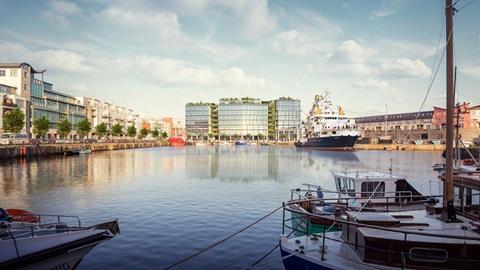
The planned €100m complex overlooking Galway Docks will include four grade-A office blocks totalling 279,850 sq ft, as well as 21,581 sq ft of retail space.
Veteran property developer Gerry Barrett hopes the development will help to attract a new wave of tech companies to the city and says that not only would the location “confidently compete with anywhere in Dublin and anywhere in Europe for that matter”, the offices would also be available at affordable rental levels.
‘A reimagining of Galway’
Barrett has built up his holdings in Galway since exiting the National Asset Management Agency (NAMA) two years ago when €778m in loans held by his business
Edward Capital were sold off at a considerable discount. During that time, Barrett managed to retain ownership of the two-acre docklands site, which he bought for €9m in 2005 before the property crash.
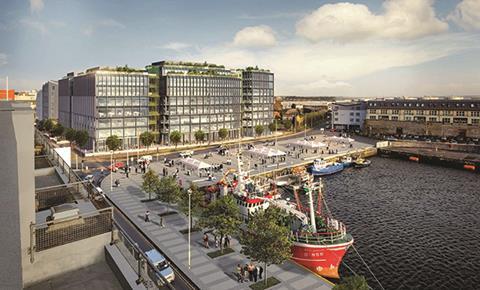
He believes the scheme will kickstart regeneration across the city. “It will cement a reimagining of Galway as it moves towards 2020 and takes up the mantle of European Capital of Culture,” he says. “Bonham Quay will finally deliver new office space in an area that has seen demand outstripping supply in recent years.”
Unlike Dublin, Galway is not expected to benefit particularly from the Brexit effect.
Aidan Gavin, managing director of Cushman & Wakefield Ireland, who is advising Edward Capital, says: “Brexit won’t have that big an impact on our plans. Our core occupiers are likely to be established in Galway already - the likes of Oracle and IBM are all here now.”
The medtech and technology sectors are already well established in the area, he says, adding: “The National University of Ireland Galway and Galway Technical Institute churn out a really high calibre of future tech workers, so we expect this to be the core of our market.”
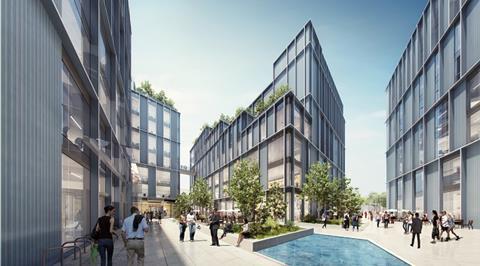
Gavin believes the new urban quarter will make up for the “dearth in city centre office space”, which has so far prevented more major international companies moving operations to the city, and that it will be followed byfurther docklands development in Galway and beyond.
“Ireland’s docklands have been primed for growth for some time,” he says. “These sites weren’t developed in the last cycle due to ownership issues and the after-effects of the crash but there has always been demand and now developers seem primed to take advantage.”
With nearly 35 ports across the Republic, the docklands revival may be only just beginning on the Emerald Isle.







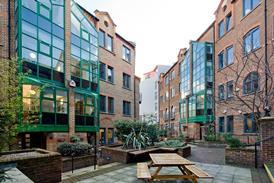




















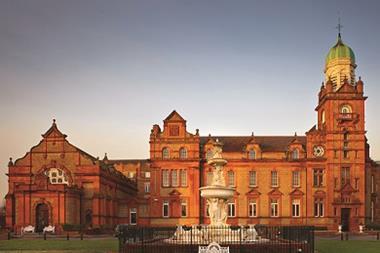
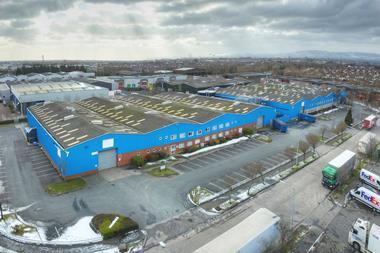
No comments yet